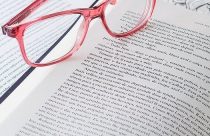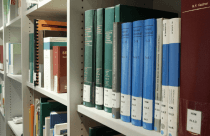What Is a Camera-Ready Copy?

“Camera-ready” copy refers to the final stage of text, tables, and illustrations of a manuscript and includes proper formatting. What is submitted as camera ready is printed as it is with no revisions. The term was originally coined because the manuscript was sent to a printer to be photographed for offset printing. These days, although the term is still used, we either print or create a printing plate directly from an electronic or hardcopy version.
Several desktop publishing programs can be used to create manuscripts. Most of these can also be used to create tables and illustrations. Pagemaker, Ventura, and QuarkXPress are some popular software programs, but LaTeX appears to be the program of choice for many scientists. It is very useful in preparing documents for e-publishing that contain complicated mathematical equations and illustrations.
Publisher Compliance
Not all publishers reproduce a manuscript directly from camera-ready copy. In fact, only a small proportion have taken this next step in publishing that saves both time and money. Elsevier, one of the largest publishers worldwide, accepts camera-ready copy in its series of collections from conferences called Procedia. Elsevier provides very specific author instructions for submitting a camera-ready copy electronically. Wiley also accepts camera-ready copy and provides complete instructions on how to submit camera-ready paper copy using the various formatting programs for self-publishers of books.
When submitting a manuscript in this format, it is important to read the author guidelines carefully to know the about the acceptable programs and avoid any issues with compatibility. Pay close attention to the templates and samples available to you, especially those that contain information on formatting.
LaTeX
More than one publishing software allows you to produce camera-ready copy for e-publishing. Developed by Leslie Lamport in 1985, “LaTeX” has become the go-to program for creating camera-ready scientific papers. It is used extensively in many scientific disciplines that require complex equations and illustrations, such as engineering and physics.
Many advantages of LaTeX include:
- Any text editor program can be used to revise the file
- The format is consistent
- The program is available freely to the users.
General Guidelines
To prepare camera-ready electronic files for Elsevier, go through the links provided and examine the templates. Elsevier uses elsarticle.cls, which provides LaTeX formatting rules and information. It also provides some standard templates, such as logos, and software packages for specific disciplines, such as Nuclear and Particle Physics Proceedings, Physics Procedia, Procedia Chemistry, and Procedia Computer Science. Wiley also provides detailed instructions for preparing camera-ready copy, whether hardcopy or digital. These instructions are especially relevant to self-publishers of books and to those who will submit their manuscripts on hardcopy. It also recommends LaTeX for those who are embedding complicated mathematical equations and illustrations into their manuscripts and provides the macros for LaTeX in its author guidelines.
When preparing your camera-ready manuscripts, you must consider that you are not only the author but also the designer of the work, which includes creating tables and illustrations. You must also remember that although this will ultimately be submitted as camera ready, it must still go through the copy editing process. Some general rules for creating camera-ready copy are as follows:
- Integrate text with art and tables.
- Ensure appropriate spacing between lines (as per guidelines)
- Follow standardized trim sizes for artwork
- Use a convenient page make-up program-Pagemaker, Ventura, QuarkXPress, or LaTeX
- Add page numbers and identifiers.
- Begin chapters (for books) on a new page.
- Manage page alignment and design specifications-running heads, page numbers, and more
- Cite figures consecutively.
- Check for any missing or duplicated material.https://www.enago.com/proofreading.htm
- Check camera-ready formatting.
- Follow rules for disk submissions, copyediting, and proofreading.
- Follow rules for preparing artwork and illustrations.
Whichever typesetting software you use, be sure to check your author guidelines for creating a camera-ready copy. You are ultimately responsible for the final content.










Superb explanation